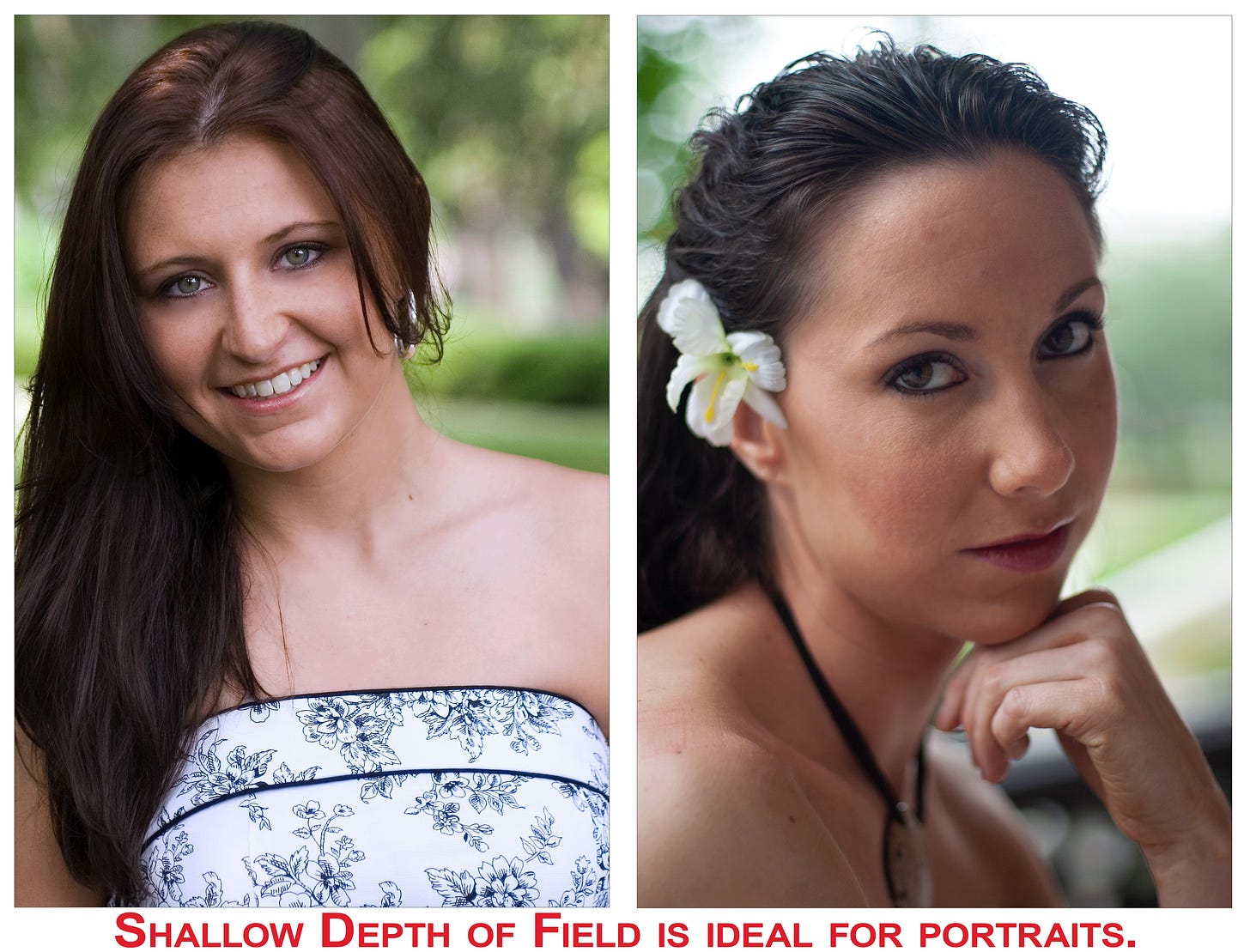Introduction: Depth of field (DOF) is a crucial concept in photography that can greatly influence the aesthetic and storytelling aspects of an image. In this tutorial, we'll delve into the principles of depth of field, explore when to use a shallow or large depth of field, and discuss the camera controls and lenses that allow photographers to manipulate it.
What is Depth of Field?
Depth of field refers to the range of distance within a scene that appears acceptably sharp in an image. It is determined by the aperture setting, focal length, and the distance between the camera and the subject.
Shallow Depth of Field:
When to Use:
Portraits: A shallow depth of field isolates the subject from the background, making the subject stand out.
Macro Photography: Ideal for capturing small subjects with intricate details.
Creative Blurring: Emphasizes specific elements in the composition while blurring the rest for artistic effects.
Camera Controls and Lenses:
Aperture: Use a wide aperture (low f-number like f/1.4 or f/2.8) to achieve a shallow depth of field.
Prime Lenses: Lenses with wider apertures (e.g., 50mm f/1.8) are excellent for creating a shallow DOF effect.
Large Depth of Field:
When to Use:
Landscape Photography: Ensures that both foreground and background elements are in focus.
Group Photos: Helps in keeping all subjects in a group photo sharp.
Architecture: Useful when capturing intricate details of buildings and structures.
Camera Controls and Lenses:
Aperture: Use a smaller aperture (higher f-number like f/11 or f/16) to increase the depth of field.
Zoom Lenses: Lenses with a longer focal length (e.g., 24-70mm) allow for versatility in achieving a larger depth of field.
Manual Focus and Hyperfocal Distance:
Manual Focus: In situations where autofocus may not be reliable, manual focus allows precise control over the focal point.
Hyperfocal Distance: Understanding and utilizing hyperfocal distance helps maximize the depth of field, keeping both near and far elements sharp.
Experimentation and Practice:
Experiment with different apertures, focal lengths, and compositions to understand how they affect depth of field.
Practice adjusting settings quickly to adapt to changing shooting conditions.
Conclusion:
Depth of field is a powerful tool for photographers to convey their creative vision. Whether you aim to isolate a subject or capture a vast landscape, mastering the principles of depth of field will significantly enhance your photographic skills.
Remember, the key to becoming proficient in managing depth of field is practice and experimentation. So, grab your camera, explore different scenarios, and let your creativity shine through your mastery of depth of field techniques.





